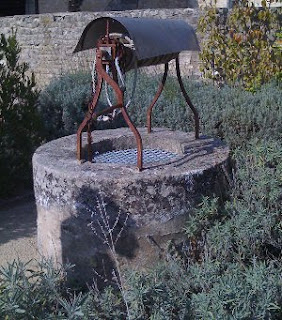Bluebeard's Castle - A Scary Story For Halloween
 Gilles de Rais has to be one of the most notorious medieval knights who ever lived. For a time he was a friend of the French king and a companion-in-arms to Joan of Arc but he went on to become obsessed with the occult and murdered what is believed to be hundreds of children.
Gilles de Rais has to be one of the most notorious medieval knights who ever lived. For a time he was a friend of the French king and a companion-in-arms to Joan of Arc but he went on to become obsessed with the occult and murdered what is believed to be hundreds of children.His castle at Tiffauges in South West France is but a ruin but it has an eery air to it. Its location high up on a rocky hill above a river seems to add to a sense of foreboding as you approach it.
We took this picture on what at the time seemed quite a bright and sunny day when we first arrived in Tiffauges but by the time the camera shutter went, dark clouds suddenly appeared from nowhere. Spooky!
Gilles de Rais is believed by many to have been the inspiration behind inspired the fairytale 'Bluebeard' written by Charles Perrault in the late 1600s. Hence, today Tiffauges castle is often referred to as 'Bluebeard's Castle'.
Labels: bluebeard's castle, gilles de rais, halloween castles, haunted castles, tiffauges castle




